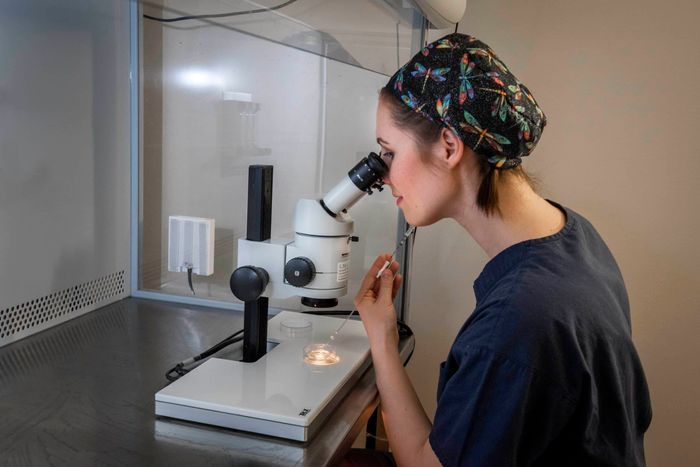IVF Cost
How Much Does IVF Cost?
Understanding IVF costs can feel overwhelming, but with proper planning and knowledge of available support systems, out-of-pocket costs can be significantly reduced through Medicare rebates, private health insurance, and transparent clinic fee structures. At Fertility North, we believe in complete cost transparency, so you can focus on your fertility journey rather than worrying about unexpected expenses.

Understanding Medicare Rebates and Safety Nets
Medicare provides substantial support for IVF treatments across Australia with no state-specific variations. The 2025 standard rebate structure offers $3720.70 for initial IVF cycles (Item 13200 + 12309 + 13215) and $3486.25 for subsequent cycles (Item 13201 + 13209 + 13215). These rebates significantly increase if you have hit your Extended Medicare Safety Net. Rebates are typically processed within two business days, helping to reduce out-of-pocket costs soon after payment.
The Extended Medicare Safety Net provides crucial additional support once you reach the annual threshold of $2,615.50, increasing rebates by up to 80% on out-of-pocket costs above this amount. Patients can optimise their treatment timing by planning multiple cycles within the same calendar year to maximise Safety Net benefits. This means that on your second or subsequent IVF cycle in the same calendar year, you can receive up to $6,500 back from Medicare.
Significantly, Medicare eligibility expanded in 2025 to remove restrictions based on relationship status, sexual orientation, or gender identity, making rebates more accessible to diverse families seeking fertility treatment.

Factors Driving Cost Variations
It’s important to remember that fertility treatment often involves more than just “IVF”. The process can include several additional steps and options. The good news is that there are flexible pathways to suit a wide range of needs and circumstances.
Patient Age
Patient age emerges as the most significant cost driver, affecting both treatment complexity and success rates. Around 80% of women under 35 require 2-3 cycles to achieve a successful pregnancy, with typical medication costs of $200-300 per cycle. For women over 40, more cycles may be needed with higher medication requirements. As a result, older patients often face greater treatment complexity and increased costs over time.
Treatment Complexity
Treatment complexity adds layers of expense beyond basic IVF cycles. The ICSI procedure adds $690 to treatment costs, while preimplantation genetic testing can cost around $950 per embryo tested. Surgical sperm collection procedures can add $850-$2,500, and cryopreservation services require an initial freeze cost of $320, and ongoing storage fees of $350 annually. Each of these services attracts a Medicare rebate.
Fresh or Frozen Embryos
The difference between fresh and frozen embryo transfers is substantial, with FET cycles costing $1,500-$2,500 out-of-pocket compared to full IVF cycles. This makes embryo banking strategies particularly cost-effective for patients likely to need multiple attempts.

Private Health Insurance Coverage Essentials
Gold tier private health insurance becomes beneficial for managing hospital costs, which can reach $1,500 plus anaesthetist fees of $400-$550 (Joondalup Health Campus). HBF dominates the Western Australian market with competitive Gold policies starting at $294 monthly, offering strong gap coverage arrangements with Perth fertility clinics. Unfortunately, other tiers of private health insurance (for example- essential, bronze and silver) don’t often cover IVF – which may also be listed on your policy under Assisted Reproductive Treatment (ART) Services. It’s important to check your policy before starting treatment.
Private health insurance funds require a mandatory 12-month waiting period for assisted reproductive services, so forward planning is essential. However, patients switching between equivalent levels of cover don’t necessarily have to restart their waiting periods.
When combined with Medicare, private health insurance can play a key role in significantly lowering the out-of-pocket expenses for IVF treatment, depending on your level of cover.
Cost-Effectiveness Considerations Across Age Groups
Patient Age
When it comes to IVF, costs can vary depending on your individual circumstances, and age is one of the key factors. While younger patients often require fewer cycles, those in their 40s may need to plan for more complex or extended treatment. Understanding these patterns early on can help you make informed choices and budget realistically, with the goal of maximising your chances of success. Starting treatment as soon as possible is often recommended for both medical and financial reasons.
Genetic Testing
Genetic testing, such as PGT-A, can help achieve pregnancy sooner by identifying the most viable embryos for transfer. For patients over 35, this investment is often cost-effective, with testing priced at $950 per embryo. By reducing the risk of failed transfers and minimising the number of treatment cycles needed, the cumulative cost savings can outweigh the initial genetic testing investment.
Planning Multiple Cycles
Planning for multiple cycles is often essential, with most patients needing to realistically budget for 2-3 egg-collection cycles. Fertility North’s transparent fee structure enables accurate financial planning without concern for hidden charges that can emerge during treatment.
Fertility Preservation Cost Considerations
Medical fertility preservation receives substantial funding support through the ART Storage Program, covering up to 10 years of storage costs for cancer patients and those with genetic conditions undergoing preimplantation genetic testing. Social fertility preservation remains largely self-funded, with egg freezing cycles costing $8,000-$15,000 plus annual storage fees.
The distinction between medical and social fertility preservation significantly impacts costs, with medical necessity enabling Medicare rebates and potential employer coverage. Early consultation with fertility specialists helps determine eligibility for funded preservation programs.
Exploring Your Options
If IVF treatment feels financially out of reach, there are flexible options that may help. Our team can talk you through potential pathways such as accessing your Superannuation through SuperCare or setting up a payment plan with HandyPay or Medipay. If SuperCare sounds right for you, keep in mind that the application process can take some time, so it’s best to plan ahead. Unlike some clinics that may require full upfront payment, we don’t request payment until later in the cycle — typically at embryo transfer — which means your money stays in your account longer. Our team is happy to talk through these options and help you find a path that fits your needs.
